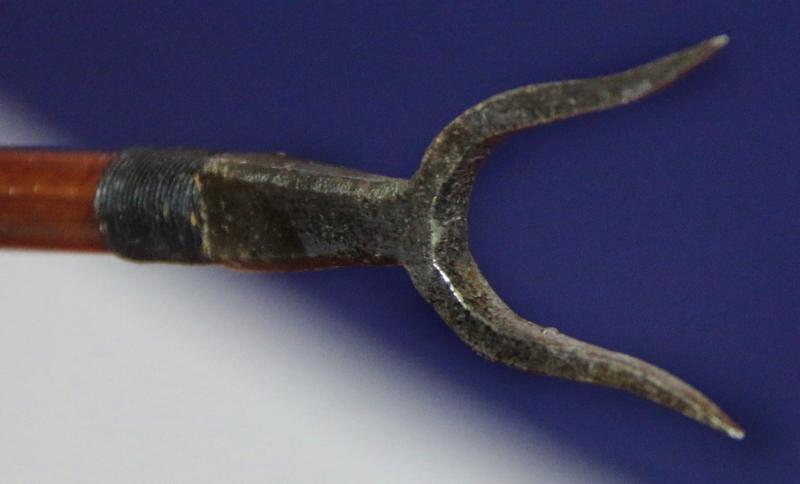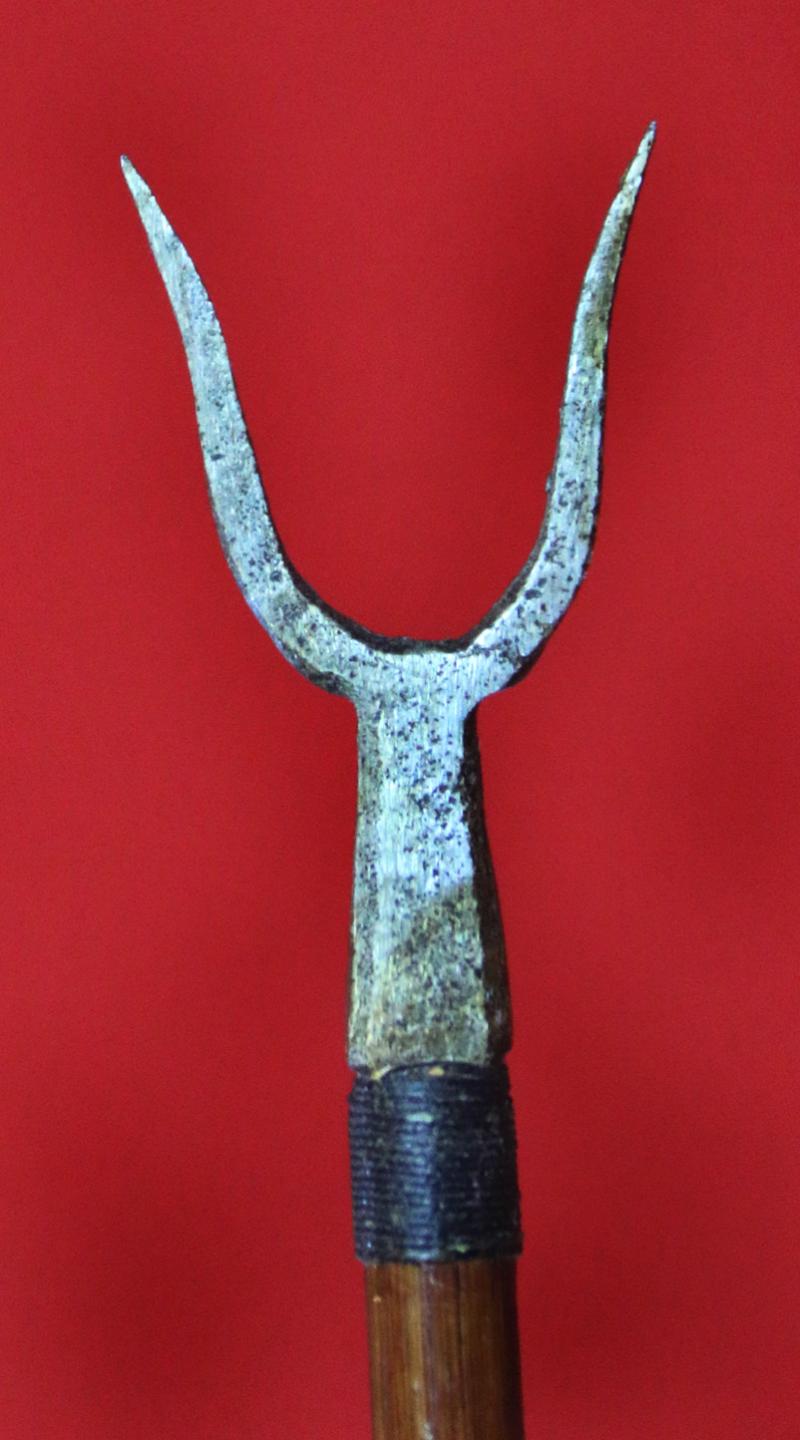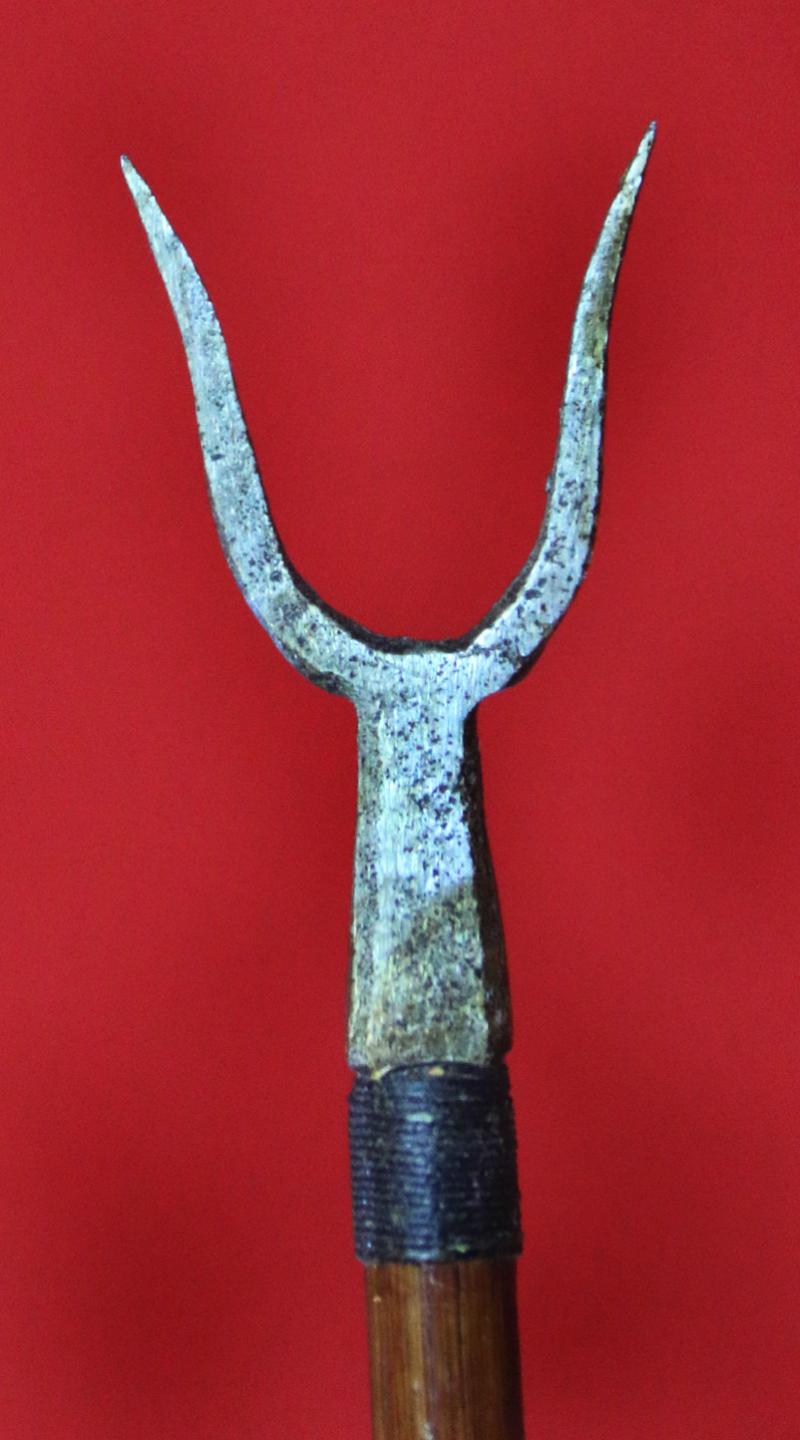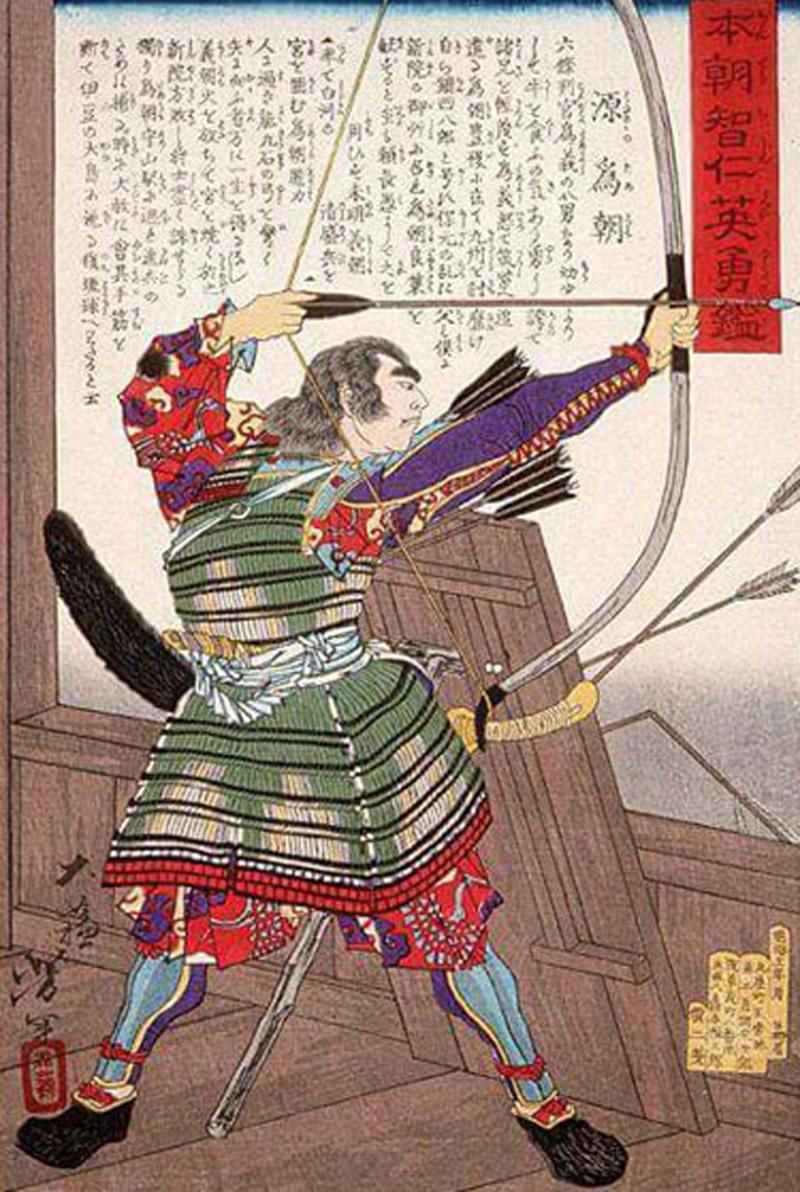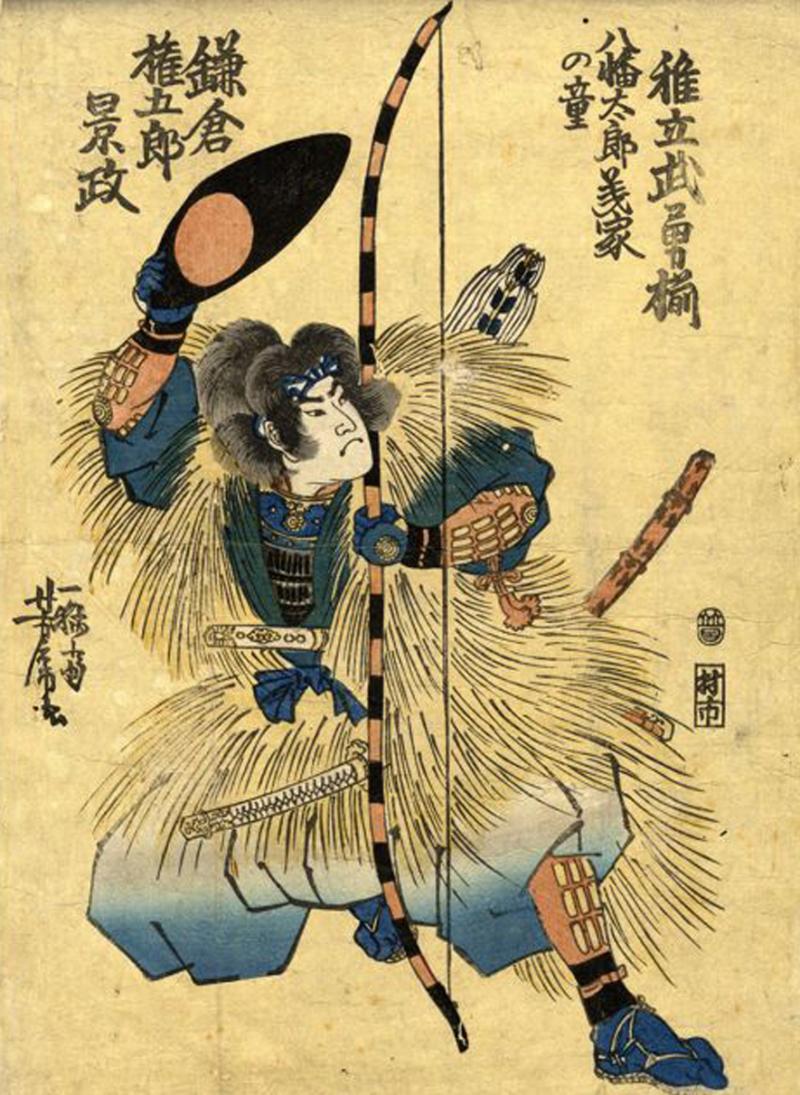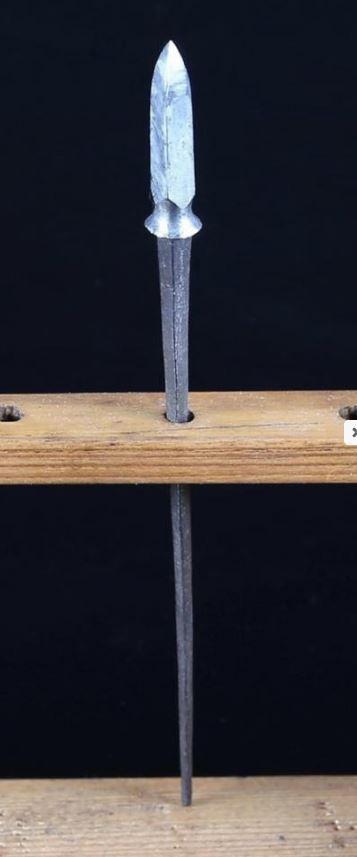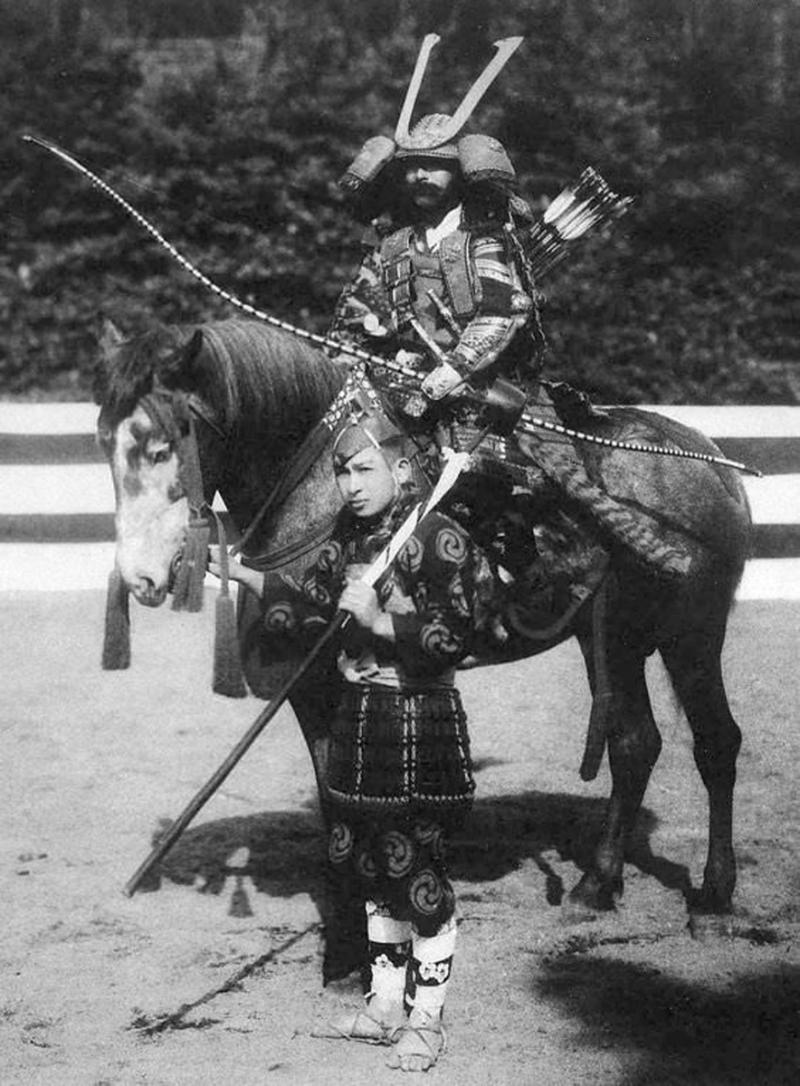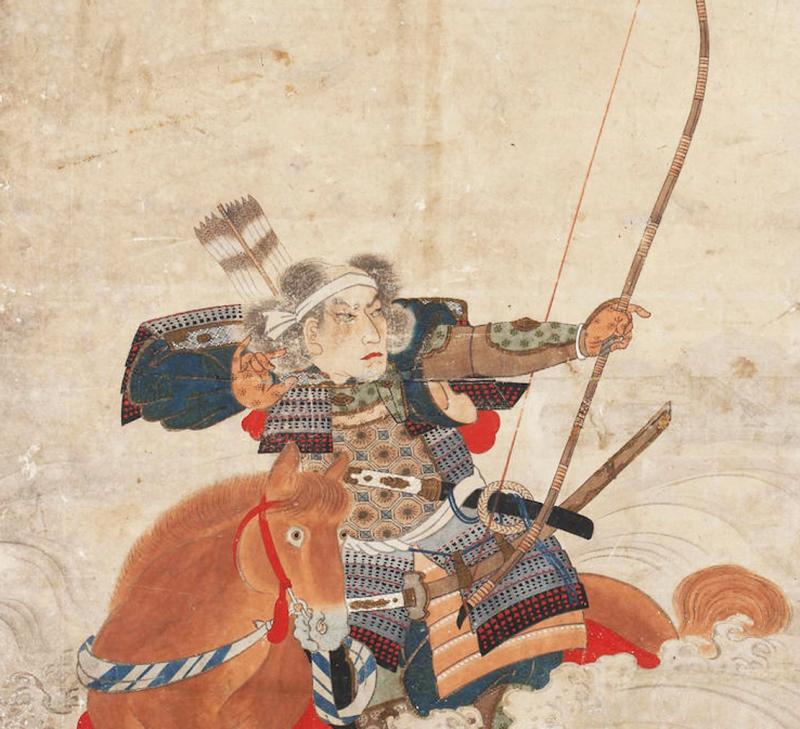A Rare, Antique, Kamakura, {鎌倉時代}, Kamakura Jidai, 1185–1333 Style, Ageha 'V' Shaped 'Swallow Tail' Arrow Of Yadake Bamboo, With Sea Eagle Flights and Steel Head
The ageha swallow tail arrows of this type appear mostly in the Kamakura period, the head may indeed be from that period, and the early eagle feathers are now considerably worn. Experienced Kamakura archers were allowed to use arrows with the V-shaped swallowtail prong {ageha}. If armour is struck, it will splinter, so, the optimum target for a lethal blow on any opponent, wearing full traditional samurai armour (O-Yoroi), is the space just beneath the helmet visor that is often bare. It was once told to us by a very aged and respected Japanese sensei visitor, who was a master of Yabusame mounted archery, that to hit a samurai at the bridge of the nose, beneath his kabuto helmet peak, with the swallowtail ageha ya, it would penetrate both eyes at once. It may not be instantly lethal but the samurai would be immediately blinded, and thus have no function in combat. The samurai’s Ya could also be made with tamehagane steel, the same as used for swords, with similar tempering, despite potentially being a ‘fire and forget’ weapon, used only once for barely a minute of combat for each arrow.
In the post Kamakura era, in the Edo period, the swallow tail arrow was changed slightly and used with two interior sharpened edges, and its use was changed to cut the retaining straps of cuirass armour and the like.
The arrows are made using yadake bamboo (Pseudosasa Japonica), a tough and narrow bamboo long considered the choice material for Japanese arrow shafts. The black {now faded to brown} and white feather flights {hane} are likely Steller's sea eagle feather. Period 1599 -1863.Kyu Jutsu is the art of Japanese archery.The beginning of archery in Japan is pre-historical. The first images picturing the distinct Japanese asymmetrical longbow are from the Yayoi period (c. 500 BC – 300 AD).
The changing of society and the military class (samurai) taking power at the end of the first millennium created a requirement for education in archery. This led to the birth of the first kyujutsu ryūha (style), the Henmi-ryū, founded by Henmi Kiyomitsu in the 12th century. The Takeda-ryū and the mounted archery school Ogasawara-ryū were later founded by his descendants. The need for archers grew dramatically during the Genpei War (1180–1185) and as a result the founder of the Ogasawara-ryū (Ogasawara Nagakiyo), began teaching yabusame (mounted archery) In the twelfth and thirteenth century a bow was the primary weapon of a warrior on the battlefield. Bow on the battlefield stopped dominating only after the appearance of firearm.The beginning of archery in Japan is pre-historical. The first images picturing the distinct Japanese asymmetrical longbow are from the Yayoi period (c. 500 BC – 300 AD).
The changing of society and the military class (samurai) taking power at the end of the first millennium created a requirement for education in archery. This led to the birth of the first kyujutsu ryūha (style), the Henmi-ryū, founded by Henmi Kiyomitsu in the 12th century. The Takeda-ryū and the mounted archery school Ogasawara-ryū were later founded by his descendants. The need for archers grew dramatically during the Genpei War (1180–1185) and as a result the founder of the Ogasawara-ryū (Ogasawara Nagakiyo), began teaching yabusame (mounted archery) Warriors practiced several types of archery, according to changes in weaponry and the role of the military in different periods. Mounted archery, also known as military archery, was the most prized of warrior skills and was practiced consistently by professional soldiers from the outset in Japan. Different procedures were followed that distinguished archery intended as warrior training from contests or religious practices in which form and formality were of primary importance. Civil archery entailed shooting from a standing position, and emphasis was placed upon form rather than meeting a target accurately. By far the most common type of archery in Japan, civil or civilian archery contests did not provide sufficient preparation for battle, and remained largely ceremonial. By contrast, military training entailed mounted maneuvers in which infantry troops with bow and arrow supported equestrian archers. Mock battles were staged, sometimes as a show of force to dissuade enemy forces from attacking. While early medieval warfare often began with a formalized archery contest between commanders, deployment of firearms and the constant warfare of the 15th and 16th centuries ultimately led to the decline of some archery in battle. In the Edo period archery was also considered an art, and members of the warrior classes participated in archery contests that venerated this technique as the most favoured weapon of the samurai.
Picture 8 in the gallery shows a different arrow head, but the same form of elongated tang, similar to yari, is used to hold the arrow head firmly in place. Some are signed by the smith. Naturally this ageha head cannot be removed to show this.
Code: 25431


